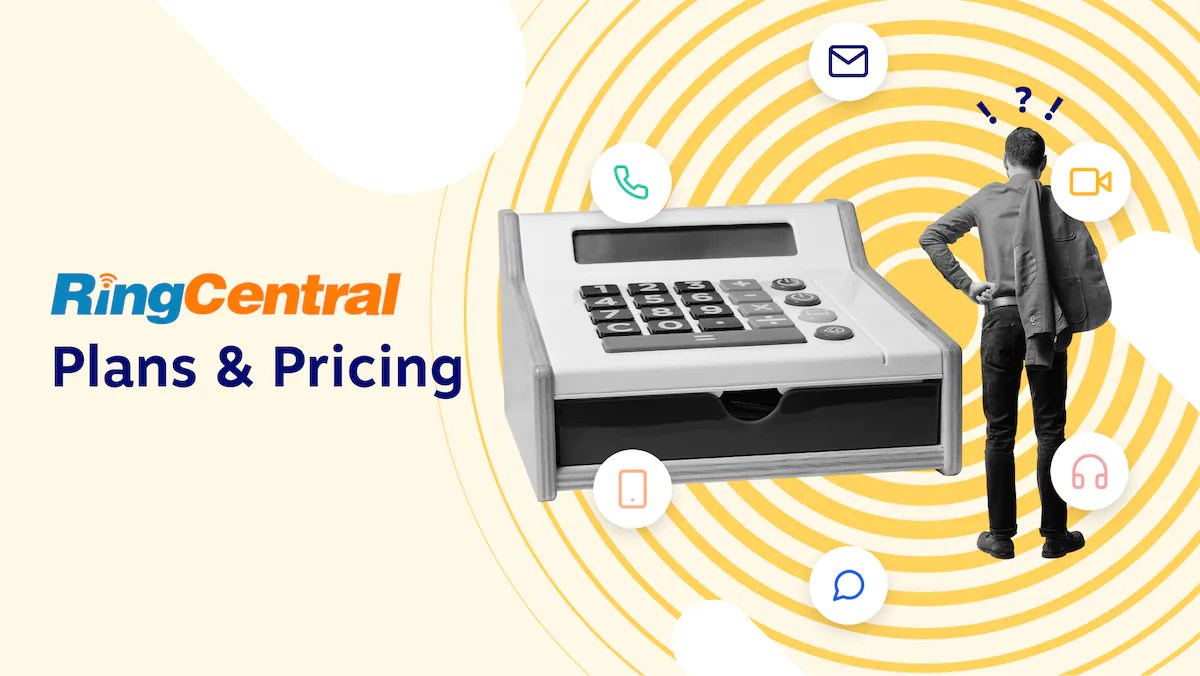Forecasting isn’t just a tool, but a strategic asset that drives efficiency, customer satisfaction, and business growth. If you’re tasked with ensuring your call center operations run smoothly without overstaffing or understaffing, you will need to master the art of call center forecasting.
Luckily for you, it’s not down to magic and wizardry. Instead, it’s all about data input, quality forecasting tools, and an understanding of why forecasting is helpful for call centers.
Why Forecasting Is Helpful for Call Centers
Let’s take a look at three ways that forecasting helps call centers.
Enhances customer experience
When your staffing levels are spot-on, you have enough call center agents to handle your incoming calls. Adequate staffing also reduces wait times. Customers hate waiting in line when they have an urgent inquiry.

If you can hit (or even exceed) your service levels, customers will remember how helpful and efficient you are versus competitors who keep them holding for long periods. By aligning resources with demand, you’re taking the first step to providing a great customer experience.
Optimizes resource allocation
When you know the right number of agents needed at any given time, you minimize operational costs by avoiding overstaffing during low-demand periods. Rather than having idle agents just in case, you know exactly how many full-time equivalents are needed for specific shifts.
Not only does your balance sheet look healthier, but you also improve agent productivity and satisfaction. When there are enough agent resources to handle calls without burning out, you avoid understaffing and overworking.
With accurate forecasting, you ensure balanced workloads and more predictable schedules for agents. You save money, and agents are happier and healthier.
Aids in strategic planning
If you can dig into high-quality data, you can support long-term business planning with long-term forecasting. By knowing the likely outcomes of upcoming trends and patterns, you can become proactive rather than reactive.
As well as easing the headache that comes from handling a period of customer urgency, forecasting helps in budgeting, reporting, and resource planning by predicting future call volumes accurately.
When you get ahead of the planning curve, you can focus on the day-to-day when you need to the most.

What Needs to Be Forecast?
On the face of it, the issue seems simple. How many call center representatives do you need at any one time?
And it is that simple — once you’ve cross-referenced your key metrics and key performance indicators. It’s only when you have a thorough understanding of these findings and how they impact the way you manage customer interactions that you can get a firm figure for how many agents are optimal.

Call volume
Without an expectation about the number of calls your agents will be handling, everything else is null and void. If you run an inbound call center, especially one with high volumes or complex queries, you need to get a handle on genuine call volumes.
Use historical data analysis to predict future inbound and outbound call volumes. If you know how many calls you receive on a typical Monday, Tuesday, and Friday, etc., you can plan for the norm. Dip into your call center analytics, and work your way back through the year to get your average call volumes on set days.
Once you’ve quantified a regular day/week/month, look for the impact of seasonality, marketing campaigns, and product launches. If you know the weeks after Christmas are extra busy because customers are processing returns and refunds, plan these in advance so you can operate your business as usual. When you’ve got more staff (or more self-service options) available when you need them, everything continues to run smoothly, and you function at your target service level.
Service level targets
Speaking of service level targets, what do you communicate to customers, and what are your internal goals?
For example, you might define your service level as 80% of calls answered within 20 seconds. Armed with this information, you can determine required staffing levels. If you’re only hitting 70% of calls answered and your average handle time keeps spiking, it’s a clear sign that your forecasting is off.
Monitor and adjust service level goals based on past performance and business objectives. There’s no point in having a goal if you stand no chance of reaching it.

Average handle time
When you have a firm estimate of the average time agents spend on each call, including talk time, hold time, and after-call work, feed this into your forecasting plan. If you can say with confidence that the average length of an unexceptional call is 60 seconds, you can take that number and your number of agents and work out whether you’re understaffed or overstaffed.
Use historical average handle time data adjusted for changes in processes or agent training too. If you can see a clear pattern when you implement changes, factor this in for planned training and special events.

Agent availability
One crucial criterion to factor in is that agents aren’t available all day. They might be in the office from nine to five, but that doesn’t mean they have eight hours of available talk time.
Don’t forget to subtract time for:
- Lunch
- Breaks
- Training
- Meetings
- Wrap-up work
On top of this, expect agent absenteeism and attrition. This includes things like:
- Illnesses (common cold, flu, etc.)
- Bereavement (parent, close friend, etc.)
- Injuries (broken leg, concussion, etc.)
- Household issues (leaks, break-ins, etc.)
While it’s hard to get a handle on figures here, having a solid baseline from the previous year will help. You can calculate your absenteeism rate using the following formula:

Special events or promotions
Predicting the impact of marketing campaigns, product launches, or special events will help you forecast better call center staffing levels.
You must liaise with your internal teams to gauge the level of interest anticipated by new pushes and initiatives. When you have a rough estimate, adjust forecasts to accommodate spikes in demand during these time periods. Failing to factor in these planned anomalies can lead to understaffing, long wait times, and low customer satisfaction.

Factors That Can Impact Forecasting Accuracy
Now let’s take a look at four issues that may impact your forecasting accuracy.
Historical data quality
The quality of what you feed into forecasting systems greatly impacts the quality you get out. In fact, it’s the largest direct influence on forecasting accuracy.
To avoid poor data interpretation and inaccurate forecasting outputs, ensure clean, consistent data collection over time. If you have bad data, resist the more-is-better mentality, and leave it aside.
It’s better to have fewer, clean data points than lots of volume-obscuring figures. Watch for unexplained anomalies and errors caused by formatting and data corruption.
Changes in business operations
When you introduce new products, services, or policies, they may affect call volumes or handling times. You should be able to spot these as dramatic spikes or fluctuations in your call center reports. Adjusting forecasts for shifts in your business strategy or customer base is a good way to make sure your forecasting quality never becomes compromised.
Technological changes
When you introduce artificial intelligence (AI) chatbots or self-service tools, there’s going to be an impact on forecast call volumes and agent workloads.
Note: This could be positive or negative. If there’s a lack of training or you push new tools on customers without warning, they may not adopt new technologies. You could experience above-average call volumes with complaints about new processes. Likewise, you could see a drop-off in call wait times. If implemented well, self-service can reduce the burden on agents and speed up customer transactions.
When planning for change, make sure you have plans for good and bad adoption.

Workforce management practices
Workforce management (WFM) is effective when you’re responding to demands and changes, but only when you follow some key best practices. It’s no good leaning on a tool if you don’t feed it the information it needs for optimal performance.

For example, adding incomplete agent training details will only lead to incorrect staffing levels. Keeping records for training and achievements in your workforce management software means you stand a good chance of keeping your staff levels correct.
When thinking specifically about call center workforce management, include details about retention programs and incentive schemes that reward productivity and availability. If agents respond well to gamification, consider adopting this on a larger scale and tracking its impact.
How to Ensure Accurate Forecasting
Keep these key points in mind to make sure your forecasting is accurate.
Use advanced forecasting tools
Say goodbye to Excel spreadsheets and manual call center forecasting methods, and leverage software that integrates historical data, real-time analytics, and algorithms with machine learning. This may be stand-alone or built into your contact center software.

Efficient Scheduling Solutions for Your Workforce – Nextiva
The scope of what can be achieved with automation and AI is vast. But you need the right data to get the most out of these tools.
Incorporate multiple data sources. Anything you traditionally display on a dashboard can be used:
- Historical call data
- CRM insights
- Call center data
- Marketing calendars
- External data sources
👉 Optimize your team’s productivity with Nextiva Contact Center’s efficient scheduling solutions.
Review and adjust forecasts regularly
Regularly update and calibrate forecasting models to reflect current trends and data. The more data you provide, and the more accurate it is, the larger the model will be and the more precise the analysis.
It’s common practice to conduct reviews quarterly and make adjustments as needed. However, you might find that call centers with large call volumes will reveal more obvious patterns in shorter time periods. Opt for monthly (or shorter-term) forecasting if you think a quarter is too long of an interval between reviews for making short-term changes.
When you get into the habit of making changes, implement a continuous feedback loop to refine forecasting models based on actual call performance.
Plan for various scenarios
Advanced contact center forecasting leans on scenarios like best-case, worst-case, and most likely, which allow you to prepare for uncertainty and have a backup to your standard forecasting plan.
For example, you might forecast that the best-case scenario for your seasonal uplift is one in which only 10% of customers call you to check stock levels because your website is up to date. At the same time, you have a worst-case forecast where you assume that 35% of customers will continue to check stock levels via phone since they’ve never logged into your portal.
When you run with a specific forecast, gather feedback from staff and analytics to see which was more accurate. Then, do two things:
- Work through why one was more accurate, and implement any business changes.
- Update your forecasting models with this fresh data.
Get Your Call Center Ready for Anything With Nextiva
High-quality data and advanced forecasting systems help staffing, drive cost efficiencies, and improve customer experience. Honestly, call center forecasting sells itself.
To be sure, there are some intricacies. You’ve got to keep track of anomalies and ensure what goes in reflects the quality of what you expect to come out. Keeping on top of this comes with practice, but the results are more than worth it.
Want to make call center forecasting easy?
Having a top-notch call center software platform, like Nextiva, helps with data gathering and providing metrics needed for precise forecasting. If you’ve got a single hub for data, forecasting, and agent interactions, you save considerable time and effort when it comes to the analysis, planning, and execution of new staff rosters.
Ready to nail your forecasting?
With all conversations in one platform, Nextiva’s top-ranked AI-powered contact center helps you satisfy more customers.

















 VoIP
VoIP 









